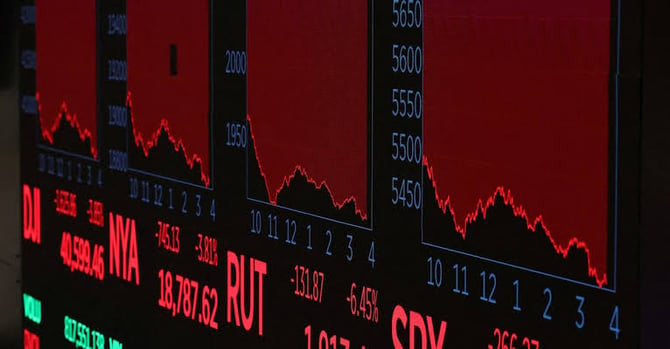Bonds, Not Stocks, Are Flashing Red Lights for the U.S.

While the world’s eyes have been on the tariff shenanigans, it’s the bond market that’s flashing the most urgent warning lights for economists.
A sharp sell-off in longer-dated U.S. Treasuries has pushed yields notably higher—most strikingly, the 10-year Treasury yield surged to 4.58%, up from under 3.9% just a week earlier.
Normally, bond prices rise when stocks fall, but this time, both are declining in tandem—a rare and troubling sign that investor faith in U.S. fiscal stability may be eroding.
Donald Trump’s sweeping tariffs on global trading partners triggered the sell-off, even though these same conditions usually drive a flight to safety in the form of U.S. government bonds.
This change in pattern has rattled market watchers, some of whom are interpreting the trend as a growing skepticism around Washington’s long-term debt sustainability.
With the national debt now surpassing $36.22 trillion, rising yields could increase borrowing costs across the board—from government financing to household and corporate debt—potentially slowing economic activity and increasing default risks.
Although Trump has since paused many of his “reciprocal” tariffs for 90 days, uncertainty still clouds the markets.
What Does This Mean for Me?
While Treasury yields have edged down slightly since the pause, they remain elevated. With questions swirling about future trade policy and bondholder reactions, the risk of further market disruption remains high.
Analysts say the continued lack of clarity could eventually impair the Federal Reserve’s ability to calibrate an effective monetary response. That means it might just be bonds—not stocks—that first reveal the cracks in the U.S. economic façade.
More News
.webp)
Japan’s Rate Shift Is Rippling Through Global Bond Markets

China’s Growth Engine Stalls as Consumers and Investors Pull Back

Egypt’s Recovery Gains Traction as Household Pressure Lingers

OECD Warns AI and Tariffs Will Test the Global Economy

Zero Tariffs, Higher Drug Bills as US and UK Reset Pharma Trade

Catastrophe Bonds Go Global as Climate Risk Meets Yield Hunting
.webp)
Canada Shields Steel and Lumber Industries From Tariffs
